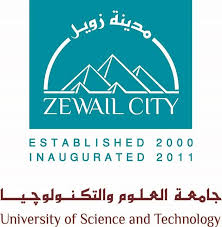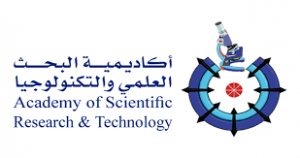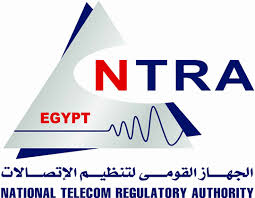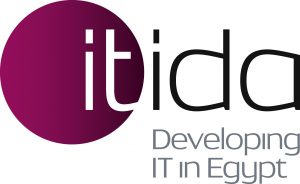1- Time-Based Applications such as ADCs, DACs, and CDCs (Funded by NSERC)
ONE Lab team members have developed several designs based on the time-based methodology. For example, the time-based Analog to Digital Converter (T-ADC) in which the analog signal is converted into time signal (i.e., pulse width, pulse position, or frequency) and then the time signal is converted to digital. Some of these designs are performed in collaboration with KAUST (King Abdullah University of Science and Technology), Saudia Arabia.
2-Next Generation FPGA (funded by NTRA, ITIDA, and NSERC)
ONE Lab team members have designed solutions to overcome the routing power of the current commercial FPGAs by using the concept of NoC inside the FPGA instead of the current bus-based routing. This NoC has been designed using wired, wireless, and optical platforms to investigate the impact of adding the NoC on narrowing the gap between FPGA and ASIC design methodologies. Some of these designs are performed in collaboration with the University of Toronto, Canada.
3-Dynamic Partial Reconfiguration (DPR) (funded by ITIDA and NSERC)
ONE Lab team members have mastered the adoption of the DPR feature on the FPGA to build several reconfigurable systems such as Reconfigurable Software Defined Radio (SDR), Reconfigurable hardware security modules, and Reconfigurable neural networks.
4- Neuromorphic Computing (Brain Inspired Computing) (Funded by NSERC ; sponsored by Mentor Graphics)
ONE Lab team members have designed several low power digital hardware implementations of the Artificial Neural Networks (ANNs), Convolutional Neural Networks (CNNs), and Spiking Neural Networks (SNNs). These networks have energy driven reconfigure-ability feature. Some of these designs are performed in collaboration with KAUST (King Abdullah University of Science and Technology), Saudia Arabia.
5- IoT and Automotive Hardware Security (Funded by ITIDA and ASRT; sponsored by Valeo)
ONE Lab team members have developed various ASIC and FPGA implementations of the different security algorithms such as 3DES, AES, SIMON, ACRON, RSA, and others with two different flavours: low power and high performance. Moreover, several prototypes of the automotive hardware security modules as well as the IoT hardware security modules have been designed and tested. Some of these designs are performed in collaboration with KAUST (King Abdullah University of Science and Technology), Saudia Arabia.
6- Biomedical Implants (Funded by ITIDA and ASRT)
ONE Lab team members have developed in collaboration with: (1) NOVELA Inc., an Egyptian-Canadian Incorporation, (2) the National Institute for Lasers Enhanced Sciences (NILES) at Cairo University, and (3) the faculty of Science, Cairo University, a complete prototype for the EEG brain signal monitoring and stimulation for seizure detection/prediction targeting Epilepsy/Parkinson treatment. This includes the design of the deep brain electrodes (provided by NOVELA Inc.), analog interfacing circuits, digital processing, communication modules (provided by NILES), and animal testing facility (provided by the faculty of Science).
7- Energy harvesting and Power Management (Funded by ITIDA and NSERC)
ONE Lab team members have designed many circuits for the energy harvesting and the power management including DC-DC converters, bandgap circuits, AC-DC converters, Maximum Power Point Tracking (MPPT) circuits, and battery chargers. All these circuits exhibit very high efficiency and some test chips are available as prototypes. Some of these designs are performed in collaboration with KAUST (King Abdullah University of Science and Technology), Saudia Arabia.
8-UWBoF Communications (funded by NTRA ; sponsored by Mentor Graphics)
ONE Lab team members objective in this project is to provide designers, engineers and researchers with a reliable and unified simulation framework that can accurately and efficiently predict and/or optimize the UWBoF system behavior in a single compatible opto-electronic simulation environment. This simulation tool is anticipated to replace several existing tools that are capable only of simulating either the optical environment or the microwave environment.
9-Emerging Technologies such as MEMS, Memristors, and TENGs (funded by ITIDA and NSERC)
ONE Lab team members have developed several applications and interfacing circuits for the emerging technologies such as MEMS sensors in collaboration with University of Waterloo, Canada, and Bristol University, UK, (temperature sensors, pressure sensors, neural electrodes, and RF switches) in collaboration, memristors modeling and applications (memories, multi-bit memories, oscillators, spintronic memristors, neuromorphic memristors systems), and TENGs modeling and applications in collaboration with Georgia Institute of Technology, USA, and Sheffield University, UK.
10- Virtual FPGA Computing Facility (funded by NTRA)
ONE Lab team members, in collaboration with Alexandria University, Assiut University, and Egyptian-Japanese University for Science and Technology (E-JUST), have developed an easy access method to the expensive hardware kits such as FPGAs, USRPs, and IoT modules, to allow students and researchers to perform their hardware experiments remotely.






